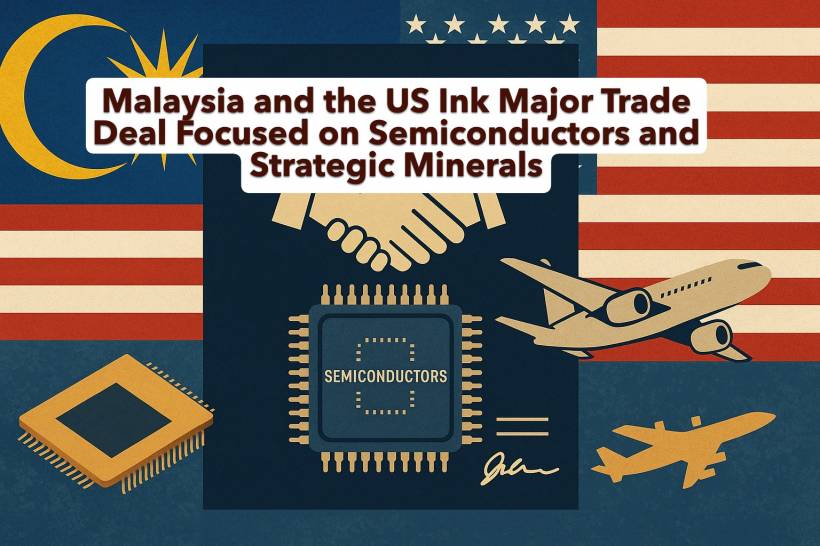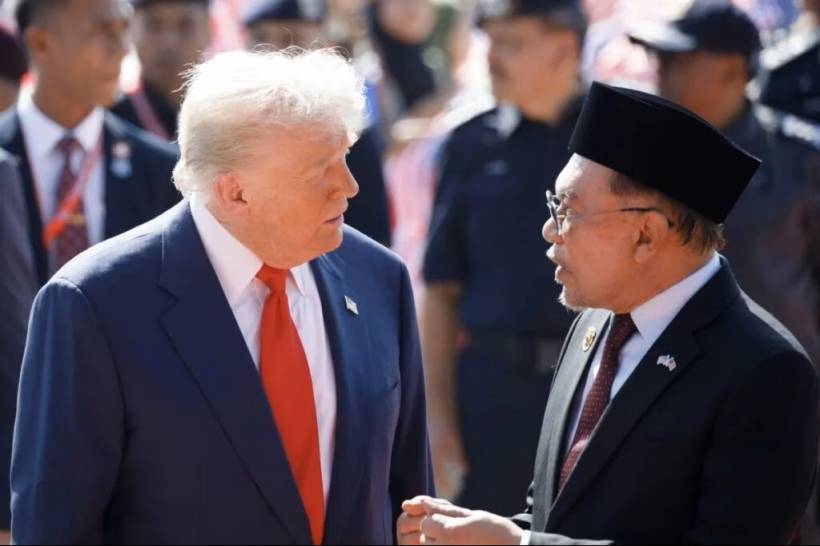In a landmark move that underscores the deepening economic ties between Malaysia and the United States, Prime Minister Datuk Seri Anwar Ibrahim and US President Donald Trump have officially signed a new Agreement on Reciprocal Trade during the 47th ASEAN Summit 2025.
The deal represents far more than another bilateral accord—it's a strategic signal of how Malaysia and the US are positioning themselves amid shifting global supply chains, semiconductor rivalries, and the ongoing economic tension between Washington and Beijing.
Strengthening Economic Ties Through Reciprocal Access
Under the new arrangement, the US will maintain its 19% tariff rate on Malaysian goods, but with a significant upgrade: no fewer than 1,711 Malaysian products will now be exempt from these tariffs. This means wider market access for Malaysian exporters across multiple sectors—from electronics to automotive components—while giving US companies more room to compete in Malaysia's rapidly growing industrial landscape.
According to a White House press release, Malaysia has committed to providing preferential access for US industrial goods, such as machinery, chemicals, metals, and electrical equipment. The agricultural sector isn't left out either—American dairy, poultry, beverages, rice, and even ethanol are expected to gain a foothold in Malaysian markets through the new trade channels.
A Semiconductor Boost Worth Billions
Perhaps the most eye-catching component of the agreement is Malaysia's plan to purchase a staggering US$150 billion (RM633 billion) worth of semiconductors, aerospace parts, and data center equipment from US manufacturers.
This move cements Malaysia's growing role in the global semiconductor supply chain, especially as American companies seek to reduce dependency on China-based production. The deal also aligns with Malaysia's Semiconductor Strategic Roadmap, which aims to elevate the country from an assembly hub to a design and innovation leader in advanced chip manufacturing.
In addition, Malaysia will procure 30 US-made aircraft with an option for 30 more—likely signaling a continued modernization of the nation's aviation and defense sectors.
The MoU on Critical Minerals: A Strategic Alignment
Alongside the trade deal, Malaysia and the US also signed a Memorandum of Understanding (MoU) on Critical Minerals, a development that has significant geopolitical weight.
China recently announced restrictions on rare earth mineral exports and introduced retaliatory port fees targeting US-linked vessels. These measures sent shockwaves across global supply chains, given that China controls over 70% of the world's rare earth supply.
The Malaysia–US MoU is, therefore, more than symbolic—it's a strategic hedge against China's export dominance. For the US, Malaysia represents a stable and friendly partner in Southeast Asia capable of contributing to the diversification of global rare earth sourcing. For Malaysia, the MoU opens opportunities for investment, technology transfer, and entry into the high-value mineral processing market.
LNG and Energy Commitments
Energy also plays a key role in the agreement. Malaysia has pledged to purchase up to US$3.4 billion (RM14.36 billion) worth of liquefied natural gas (LNG) from US suppliers. This will not only support Malaysia's energy diversification goals but also strengthen bilateral trade flows across both traditional and green energy sectors.
Given the global momentum toward cleaner energy solutions, this purchase reflects Malaysia's balanced approach—maintaining stable energy supply lines while exploring renewable initiatives through its National Energy Transition Roadmap (NETR).
Digital Trade: Removing Barriers and Building Trust
One of the more forward-looking aspects of the deal involves digital trade and data governance. Malaysia has agreed to remove digital barriers that previously limited US tech investments and online services.
Specifically, Malaysia has committed to:
These steps reflect Malaysia's intention to align more closely with global digital trade norms, fostering innovation and investor confidence in the tech and cloud computing sectors.
A Balancing Act Between Washington and Beijing
The timing of this agreement is especially significant. With the US–China trade rivalry continuing to escalate, Malaysia's decision to deepen its partnership with Washington may serve as both an economic advantage and a diplomatic balancing act.
President Trump's earlier threats of imposing 100% tariffs on Chinese imports have been temporarily suspended, but the message remains clear: the US is realigning its supply chains away from China. Malaysia's participation in this realignment positions it as a key ASEAN intermediary—a nation capable of maintaining trade relations with both superpowers while reaping strategic benefits from each.
What This Means for Malaysia
For Malaysia, the deal offers clear economic upside: increased exports, foreign investments, and access to US technology. But it also demands careful navigation of geopolitical sensitivities.
The partnership could accelerate Malaysia's growth in semiconductors, aerospace, and digital infrastructure, transforming it into a Southeast Asian hub for advanced manufacturing and smart technology. At the same time, Malaysia must maintain open communication with China, its largest trading partner, to avoid diplomatic friction.
Final Thoughts
The Malaysia–US Reciprocal Trade Agreement of 2025 is a bold statement about Malaysia's ambitions in a rapidly changing global economy. It's not just about tariffs or trade numbers—it's about positioning Malaysia at the crossroads of innovation, supply chain resilience, and geopolitical influence.
As semiconductor demand continues to surge and nations race to secure critical mineral resources, this partnership could mark the beginning of a new era—one where Malaysia emerges not just as a participant, but as a strategic player shaping the future of global trade.





